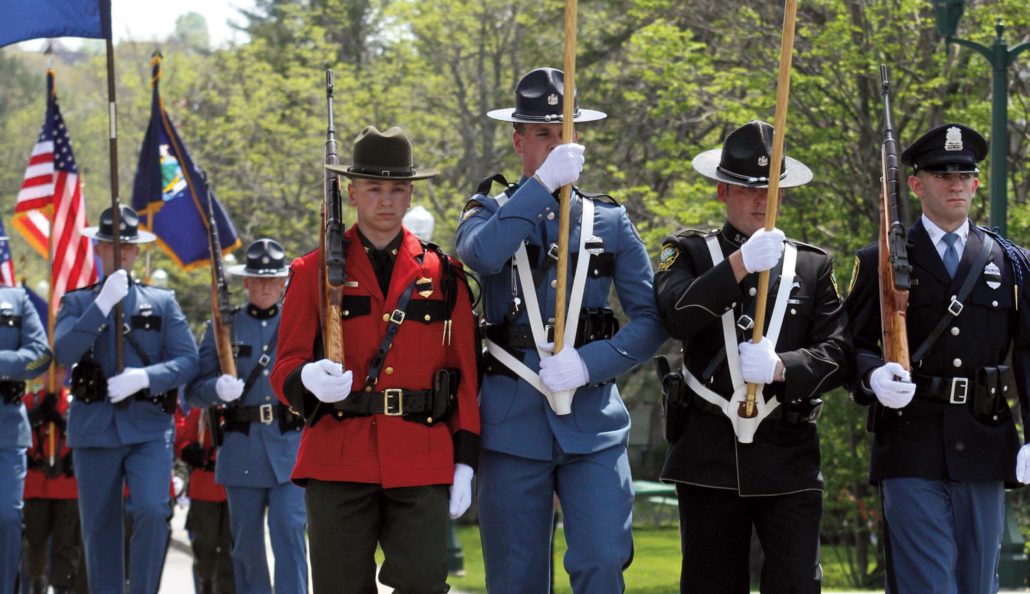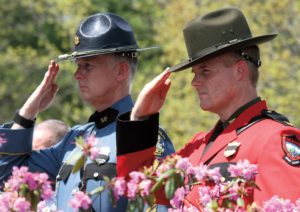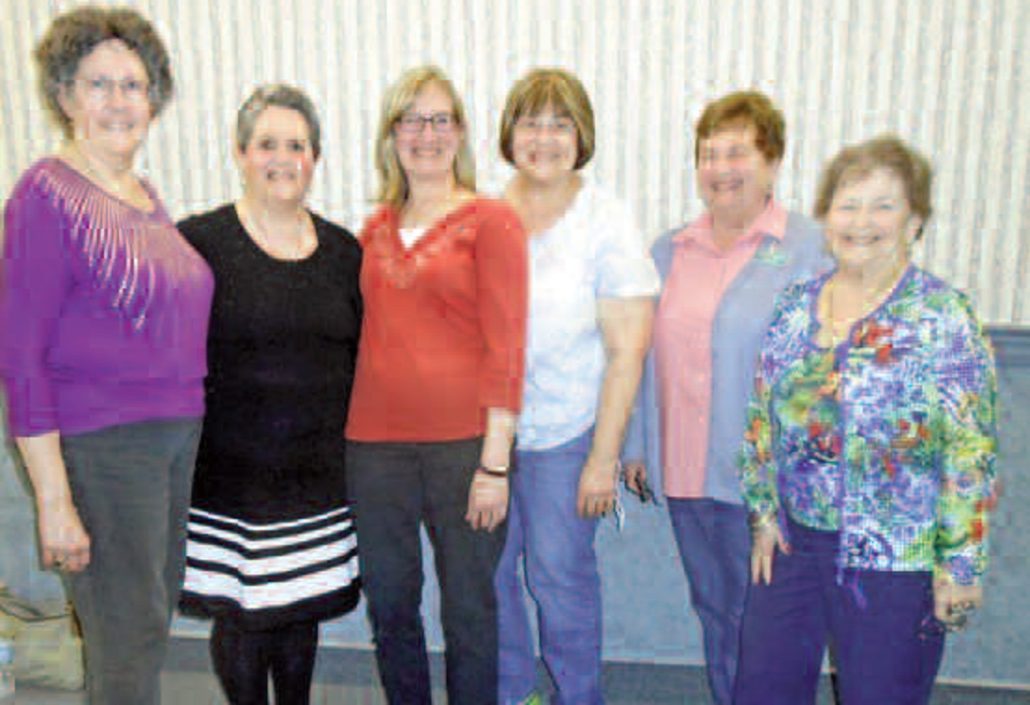
All gave some…some gave all: Flags line all the graves at the Maine Veterans Memorial Cemetery, in Augusta.
Photo by Kevin Giguere, Central Maine
by Central Maine Photography Reporter/Writer Jessica Laliberte
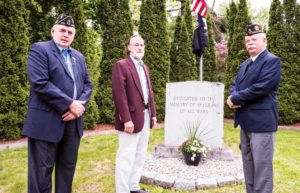
Local service organization leaders pose at the veterans memorial in South China. From left to right, Rick Fischer, Jeff Zimmerman and Neil Farrington.
Contritured photo
sea of red, white and blue fills the Maine Veterans Memorial Cemetery, in Augusta, as thousands of flags adorn the graves of soldiers buried in the cemetery. This is the 11th year of the event. The ceremony featured music from the Public Safety Pipes and Drum Corp, the singing of the National Anthem, prayer by a local deacon, and brief remarks from Maine Governor Paul LePage.
Hundreds of volunteers including Scouts, veterans, civilians and other civic groups joined forces to place a flag on the grave of every soldier buried in the cemetery, about 15,000 in total, on Saturday, May 27.
As the volunteers dispersed to the graves with flags in hand, the bagpipes playing Amazing Grace echoed in the chilly morning air.
The flags were purchased through donations. According to Donald Simoneau, a past state commander and organizer of the event, about 750 veterans die each year and are buried at the Maine Veterans Cemetery.
If you would like to donate you can make checks payable to the American Legion “Grave Flag Program,” P.O. Box 900, Waterville, ME 04901.
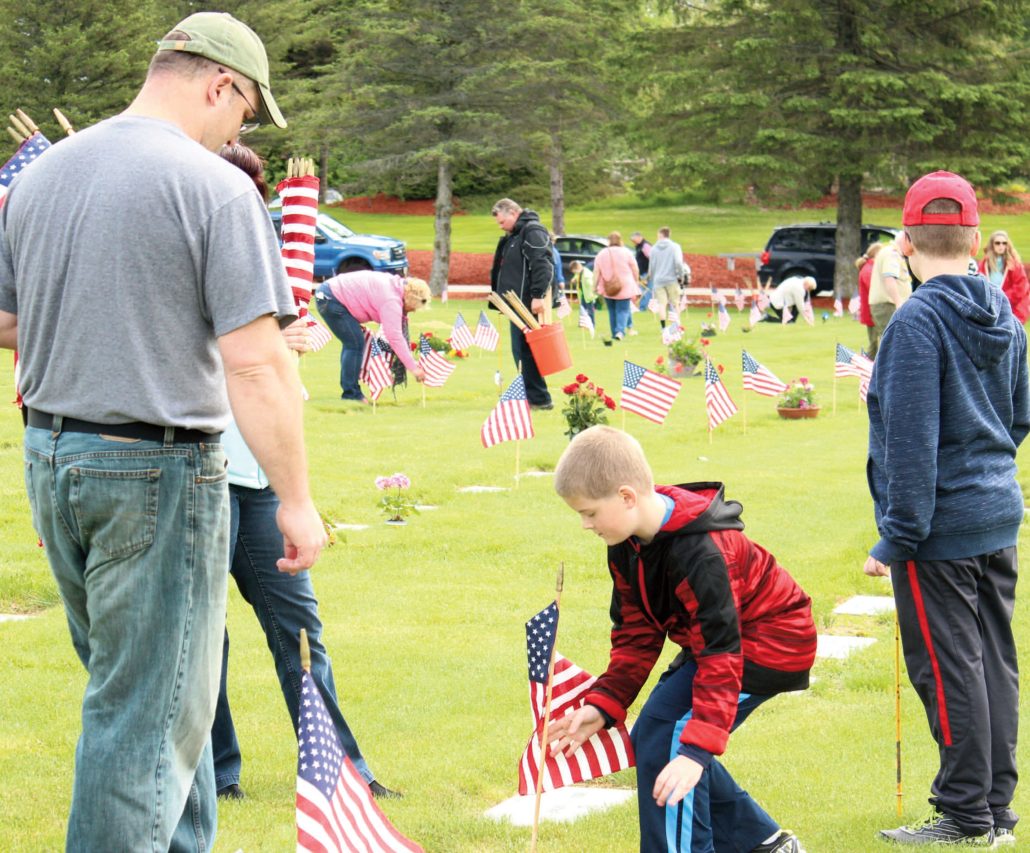
In honor of their service: Derek Fennell, a Marine veteran from China, with his two sons, Kamren and Evan, places flags at the Maine Veterans Memorial Cemetery, in Augusta, on May 27.
Photo by Kevin Giguere, Central Maine Photography staff.






